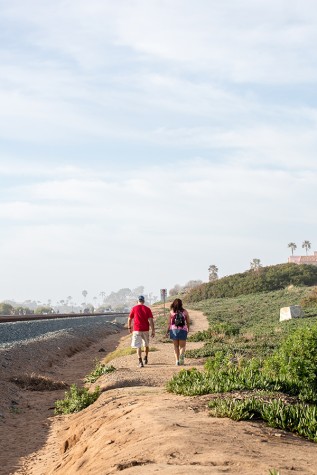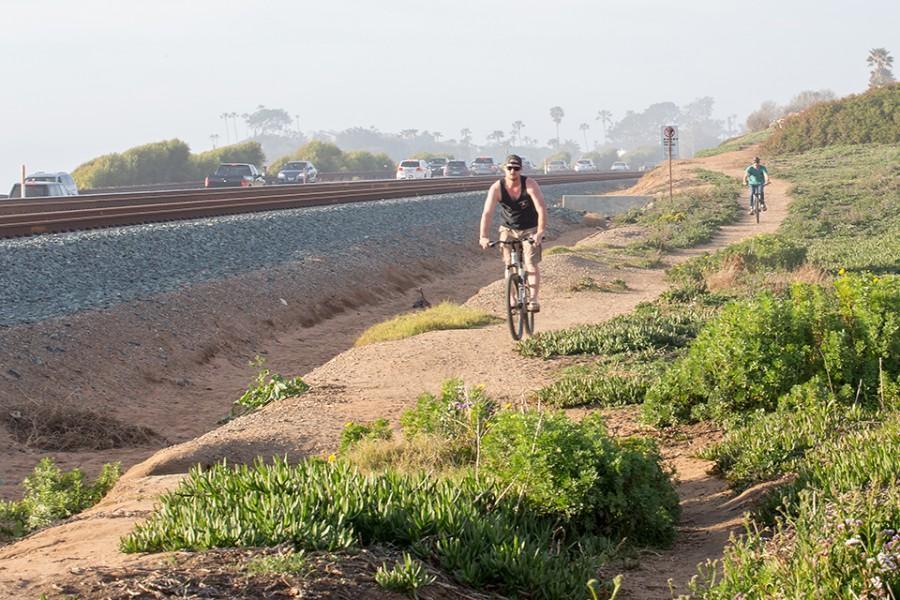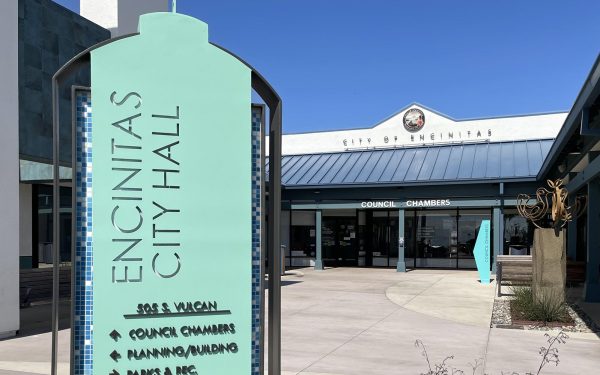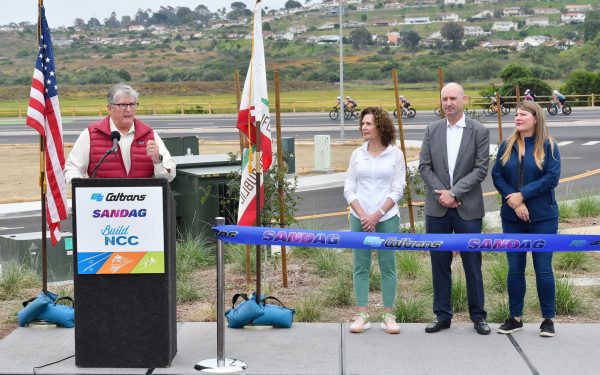Fence, Montgomery track crossing among issues for Cardiff rail trail
Bicycle riders use a path alongside the rail line in Cardiff on Feb. 14. The area is a possible route for the Coastal Rail Trail. (Photo by Jen Acosta)
February 24, 2016
Cardiff’s section of the Coastal Rail Trail has stirred up controversy for almost two years now, but even with the Encinitas City Council’s approval, the project isn’t rolling forward just yet.
“It really is premature to even think about a rail trail until we get that crossing figured out,” said Joe Alkhas, the resident behind the NoRailTrail.com campaign.
Alkhas said that one of the top concerns brought by residents in community meetings was beach access, and that hasn’t been clearly addressed.
“SANDAG let us know for years there was supposed to be an undercrossing at Montgomery (Avenue). What City Council approved a few months ago was an at-grade crossing,” Alkhas said.
At-grade crossings provide a path to cross over train tracks at the street level. They also require the approval of the California Public Utilities Commission, which can be challenging to get since at-grade crossings have been found by the commission to be less safe. The approval process can take about three years.

But the rail trail is expected be completed by late 2017, and the City Council aims to persuade the CPUC so the crossing can be built around the same time.
Alkhas said that he and some of the other residents who opposed the project aren’t against a trail, but they think that the City Council and the San Diego Association of Governments should spend more time planning.
“They’d rather close their eyes and take a leap, but they should really take the time to study the traffic, the parking and ecological impact,” he said.
He also said that SANDAG and the City Council failed to listen to community feedback.
“In the two meetings I attended in 2014, the vast majority weren’t opposed to a trail, but they didn’t want it to be concrete and nobody wanted a fence,” Alkhas said.
The planned 4-foot fence is unpopular, but that decision belonged to the North County Transit District.
Mayor Kristin Gaspar and Councilman Mark Muir released a position paper against the rail trail, but they stated that the fence could be built soon even without the rail trail.
“They consider it a deterrent, like a stop sign,” Alkhas said. “Whether or not people will follow that stop sign is another matter.”
Muir said that the NCTD’s fence was meant to limit accidents involving pedestrians crossing the tracks, and he wasn’t sure how many accidents have occurred in the past.
Whatever the number, other residents would prefer not to risk it.

“I have a 76-year-old dad and two daughters, and I don’t want them walking along it,” said Mike Verdu, who co-created FriendsOfTheRailTrail.com with his wife, Paula.
“The current trail doesn’t support the young and the elderly,” Verdu said.
He said that while some people are able to walk along the trail in its current condition, he’s in favor of the redevelopment.
“I’m certainly not in favor of cutting Cardiff off from the beach … Sorry we have to have the fence, but NCTD insists on it,” he said.
Verdu said that despite any loss of parking or other inconveniences brought by the project, he’s happy to make the tradeoff just to have a safe space to walk.
The rail trail still has a long way to go before it’s built. The plan is still being completed, and after that it will begin the environmental review process pursuant to the California Environmental Quality Act.
A representative from SANDAG could not be reached for this article.
Amanda Rhoades is a San Diego freelance writer















